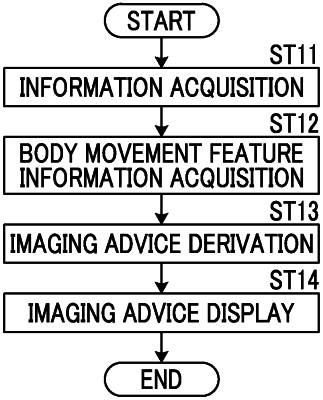| CPC A61B 6/025 (2013.01) [A61B 6/0487 (2020.08); A61B 6/4476 (2013.01); A61B 6/502 (2013.01); G06T 7/0014 (2013.01); G06T 2207/20084 (2013.01); G06T 2207/30068 (2013.01)] | 13 Claims |

|
1. A tomosynthesis imaging support apparatus comprising at least one processor and a storage, wherein the processor is configured to:
acquire information including subject information indicating a type of breast, which is determined by amounts of mammary gland tissue and adipose tissue contained in the breast, in a case where a plurality of projection images corresponding to each of a plurality of radiation source positions are acquired by performing tomosynthesis imaging in which a radiation source is moved relative to a detection unit in order to emit radiation to the breast at the plurality of radiation source positions according to movement of the radiation source; and
detect a plurality of feature points from a plurality of tomographic images, which are generated by reconstructing the plurality of projection images, and derive a positional shift amount in a three-dimensional space from the projection images and the tomographic images, for each of the feature points, as three-dimensional body movement feature information indicating a feature of body movement of the breast that occurs at a time of the tomosynthesis imaging;
wherein the storage stores correspondence information in which information including the subject information corresponds to the body movement feature information,
wherein the processor is configured to acquire at least one of imaging condition information indicating imaging conditions at the time of tomosynthesis imaging or positioning information indicating positioning of the breast, and the correspondence information stored by the storage includes at least one of the imaging condition information or the positioning information, which corresponds to the body movement feature information,
wherein the processor is configured to acquire additional information including at least one of new subject information, new imaging condition information, or new positioning information, and to acquire the body movement feature information indicating the feature of body movement of the breast that occurs at the time of new tomosynthesis imaging according to the additional information, with reference to the correspondence information, and
wherein the processor is configured to derive an imaging advice at the time of the tomosynthesis imaging according to the acquired body movement feature information, the imaging advice including advice regarding what kind of body movement occurs based on the type of the breast.
|